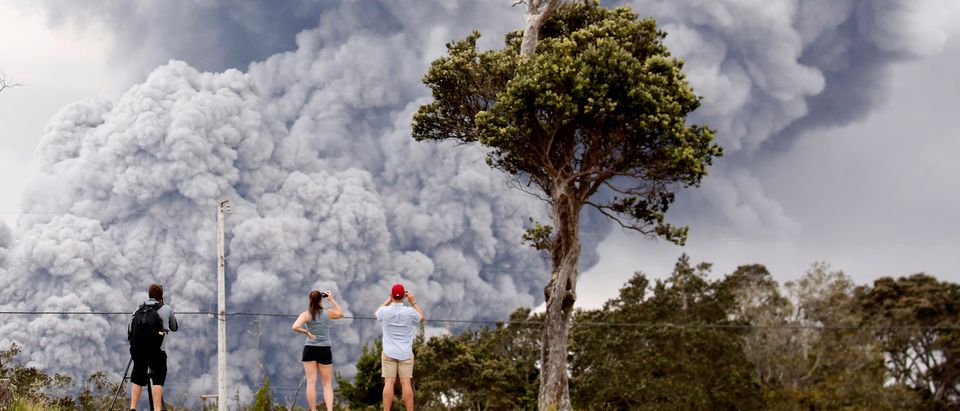Hawaiian officials have raised the aviation alert level from orange to red as a plume of ash and “vog” (a combination volcanic ash and gas) reached 12,000 feet over Kilauea, the increasingly active volcano in Hawaii’s Big Island.
Summary of #HVO #Kilauea VAN/VONA: Ash eruption at summit has increased in intensity. NWS radar & pilot reports show top of the ash cloud is as high as 10,000-12,000 feet above sea level. Ashfall and vog has been reported in Pahala (18 mi downwind). #KilaueaErupts pic.twitter.com/ChzRdu0Ch7
— USGS Volcanoes (@USGSVolcanoes) May 15, 2018
Thousands of people have been evacuated so far, and more than two dozen homes have already been destroyed — but the potential effects on aviation are still a very real concern. And in Hawaii, where both commercial and commuter planes fly daily from island to island, the impact could be devastating. (RELATED: More Than 1,000 Evacuations Ordered As Hawaii’s Kilauea Erupts Into Residential Area)
Volcanic ash in the air presents a number of problems with regard to flying, and the lack of visibility is only the beginning. Popular Science explained in laymen’s terms what NASA learned the hard way after flying through a volcanic plume in Iceland in 2000.
The fan blades where deeply gouged, the critical cooling components were clogged with a sooty gunk, and the engine’s innards were coated with a glassy, silicate material. The in-flight data showed that the engine hit nearly 2,000 degrees Fahrenheit, enough to melt silicate rocks. That’s lava in your jet engine, not ideal for longevity.
Luckily, the NASA flight landed without incident. And although there has never been a documented crash due to volcanic ash, there have been a number of close calls. But because volcanic activity is so unpredictable and many volcanic ash plumes are not visible from the flight deck, the safest thing to do is to ground all planes until the danger has passed.


